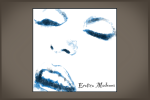There’s no guarantee that the name Anaïs Nin will ring a bell for the ordinary person, but to anyone interested in the heterodox American literary culture of the ’60s and ’70s, Nin’s story is one worth learning about. A little more than 40 years after her death, prolific Cuban-American writer Anaïs Nin remains an exquisite topic of debate for those who love “hot takes” and constantly reexamining famous figures’ complicated histories.
As is usually the case with prominent personalities, Nin was not without her fair share of controversies. In fact, it wouldn’t be a reach to say that she had an unconventional life by all measures. In her novel “House of Incest” she describes having consensual sex with her estranged father, she engaged in bigamy and kept it a secret and she admitted to practicing psychoanalysis without a license and having sex with her patients. Uninhibited and exceedingly sex-driven, Nin’s diaries, journals, essays, erotica and posthumous short stories are an infinite source of inspiration to both her attackers and admirers.
The blurred line between fantasy and fiction in Nin’s work, however, is something that emboldens only her critics. Although Nin portrayed herself in her own works as a femme fatale on a sexual crusade to arrive at the apex of female liberation, many were surprised to find that Nin’s actual constitution defied the seductress stereotype they had in mind. Her apparently delicate, petite and demure disposition seemed almost incongruous with the persona at the center of her autobiographical material. This discrepancy led many to regard her subsequent depictions of herself as mere affectation, as an elaborate fabrication she could use to immortalize the woman she was hoping to embody.
This was compounded by the fact that she zealously re-wrote and edited her diaries, which cheapened their reliability and resulted in her getting branded a calculating sellout and a pathological liar. Another criticism levied at her was that she enthusiastically espoused self-sufficiency while being almost entirely dependent on both of her husbands. Again, critics went on the offensive and argued that this detracted from diaries and journals that were sold off as an authentic reflection of her emancipated womanhood.
These days Nin is even being compared to the famous, and endlessly polarizing Lena Dunhman, in light of their shared penchant for championing self-absorption and “dramatizing” their sexual adventures. While comparisons like these can seem strangely dissonant, certainly there’s some truth to the idea that, like Dunham, Nin was someone unapologetic about expressing herself and the desires that governed her, and fain to explore the depths of her own sexuality through a violently transparent process of inward reflection.
Nin’s many contradictions and idiosyncrasies have allowed her to remain a cause célèbre throughout all these years, as she has received both reprobation and acclaim for her fearless content. Yet, despite her intriguing, larger-than-life persona, Nin’s literary work was snubbed for a majority of her own life and continues to be undermined by a much larger literary tradition.
I don’t think it would be a stretch to associate Nin’s literary belittlement to an insidious and across-the-board tendency to discredit erotic fiction as a genre given to frivolity. Case in point: the way we view erotica nowadays is framed almost exclusively around adolescent fan-fictions and amateurish guilty-pleasures like “Fifty Shades of Grey.”
At the time Nin was writing, however (in the ’60s and ’70s), erotica was a means to excavate the untapped reservoirs of human sexuality and break with existing taboos. This aspiration to write candidly about subject matter deemed illicit was one of the factors that drew Nin to a highly publicized liaison and close correspondence with esteemed writer Henry Miller. In fact, it was Nin and her husband at the time, Hugh Guiler, who funded the first print of Miller’s opus, “Tropic of Cancer,” which later became a lionized classic of American literature for the way it waged a moral and sexual insurrection against the customs of the time.
With no desire on my part to detract from the literary merit of “Tropic of Cancer,” its exaltation as a groundbreaking piece of semi-autobiographical erotic fiction begs the question of if perhaps Miller’s visibility within the genre can be attributed to something other than his talent. If Miller was commonly regarded as a subversive novelist bending social conventions, Nin was just as easily dismissed as a salacious narcissist burning pages in her diary. Nin’s legacy is no doubt complicated on its own, but we would be remiss to deliver a verdict on the legitimacy of her work without first reckoning with this gendered dimension at play.
Legacies are fascinating for a number of reasons. On one end, they have the unique power to pull late artists out of their anonymity and award them a recognition they were never lucky enough to receive in their lifetime. On the other end, shifting social mores and new and supplementary information have the distinct effect of complicating — corroding, even — the memory of beloved celebrities.
Anaïs Nin’s legacy is one sure to be in the hands of time. If before she was simply written off as a whimsical dilettante, her life’s work has, in recent times, been revisited and her position within literature currently enjoys a place as an object of appreciable discussion. In the end, Nin’s legacy and cultural significance remain, like so many other things in life, at the mercy of the generational milieu. What will another decade or two do to Nin’s legacy? Only time will tell.
















